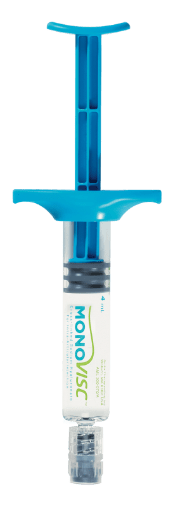Monovisc® significantly reduced the WOMAC pain score vs. saline from Week 12 post-injection up to Week 26§,¶,5,6
WOMAC pain score percent reduction from baseline with Monovisc® or saline in the ITT population6
Safety measures
Five serious adverse events were reported in four subjects. None were considered related to treatment and all were resolved without sequelae.
The most common adverse events were headache, arthralgia, spinal pain, back pain, and nasopharyngitis. Six were related to study medication: arthralgia with Cingal® (n=2) and Monovisc® (n=2), peripheral edema with Cingal® (n=1), and rash with Monovisc® (n=1).



